BECCA: But Eric Flint, why did this town spontaneously travel 350 years back in time?
ERIC FLINT: Oh, whatever, I don't even care. Ummmmm … aliens did it for an art project!
BECCA: …
ERIC FLINT: It was a very irresponsible art project and sometime in the future they will get their comeuppance.
BECCA: Will … the aliens ever appear again …?
ERIC FLINT: Nope! Anyway the point is the whole town time traveled, OK? THE WHOLE TOWN.
The experience of reading this book is kind of like having a background chorus of cheerleaders shouting “AMERICA, FUCK YEAH!” in the background at all times. Sometimes the cheerleaders are diegetic.
The good: OK actually it's a whole lengthy sff novel where the protagonists are almost all blue-collar or lower-class and from a rural area, which is extremely rare for the genre and cool to see! It is also actually less misogynistic than it could be – like, while there are a lot of rape threats as part of The Horrors of War and Evil German Mercenaries, all of the female characters from cheerleaders to hippie high school teachers to camp followers get agency, happy endings, and equal opportunity to murder the heck out of the bad guys of their choice with lots of lovingly described weaponry
The bad: First of all, Eric Flint does not believe Shakespeare wrote Shakespeare. But second, and more importantly, all that aside it is VERY OBVIOUS that a middle-aged white dude wrote this book.
ERIC FLINT: You know why America is great? Because Americans BELIEVE in the value of human life! Everyone in America knows their life is valuable and worth something!
BECCA: This is a really painful sentence to read right now.
The ridiculous: ...OK I'm just going to have to summarize the whole thing. I can't stop myself!
Our story begins with Our All-American Hero, Mike the Union Leader, hanging out at his sister's wedding.
HEROIC MIKE: Ugh, I hate my new brother-in-law's stuck-up Yankee parents. Total jerks.
DR. JAMES: Hey, Mike, nice to meet you, my daughter's the maid of honor!
HEROIC MIKE: Hey! You're the one black guy in this novel, and you speak with an inner-city accent, so I deduce before you were a doctor you were probably in the army, and before then maybe a juvenile delinquent who committed crimes!
DR. JAMES: Ha ha, yeah, you got me, bro!
HEROIC MIKE: I too was once a juvenile delinquent who committed crimes! Bro!
DR. JAMES: Bro!
However this touching moment of male bonding is broken up by, as aforementioned, a FREAK ALIEN TIME TRAVEL ART PROJECT.
HEROIC MIKE: Union buddies, let's go investigate! Everyone who has an illegal firearm, now's a good time to bring it out!
UMWA WORKERS: Ha ha Mike, OK, you got us. Time to get the automatic rifles from the car!
HEROIC MIKE: Dr. James, bro, you can come too!
DR. JAMES: I am just plain delighted to be surrounded by burly white dudes toting massive amounts of illegal firepower. Let's go!
The first thing they discover is a bunch of HORRIBLE RAPIST THIEVING MERCENARIES.
HEROIC MIKE: Well, we're confused by the armor and the thatched-roof villages, but these are clearly BAD GUYS and we have all these massively illegal firearms, so: heck with reading them their rights, let's shoot 'em all!
UMWA WORKERS: Heck yeah!
The second thing they discover is Rebecca, a BEAUTIFUL JEWISH DAMSEL IN DISTRESS, and her ELDERLY FATHER.
REBECCA: I have never seen anything as beautiful as Heroic Mike.
HEROIC MIKE: The feeling is mutual, Hot Rebecca. The feeling is mutual.
Fortunately, Rebecca speaks English, and is able to provide Heroic Mike and the rest of the townsfolk with their date and location.
HEROIC MIKE: I still find it hard to believe that an entire town had a freak time travel accident though...
REBECCA: Ah, that is because you don't have my training in logic and philosophy. If you did, you would see that it is the only solution that makes sense.
HEROIC MIKE: …you're absolutely right. OK, friends, logic and philosophy tell us that we have time traveled! There is probably no way to get home so we'll all just have to get used to it!
THE ENTIRE TOWN: OK, I guess, sure.
HEROIC MIKE: It's cool. We'll just … BUILD AMERICA FROM SCRATCH. Let's start the American revolution 150 years ahead of schedule!
THE ENTIRE TOWN: America, fuck yeah!
HEROIC MIKE: OK, so on the town council I want … a whole bunch of my UMWA buddies, the high school principle, Melissa the token feminist radical high school teacher –
MELISSA THE TOKEN FEMINIST RADICAL: And I want Dr. James!
DR. JAMEES: Is this because I'm the token black guy?
MELISSA THE FEMINIST RADICAL: Heck yeah it is! We would like to avoid America's history of being hella racist if at all possible!
DR. JAMES: Given that this is like the one time America's history of racist and otherwise morally dubious acts will be mentioned in the novel … yeah, OK, I'll take it.
HEROIC MIKE: Also I would like Hot Rebecca on my town council also?
MELISSA THE TOKEN FEMINIST RADICAL: I mean, I'm A-OK with there being AT LEAST one other woman, but why?
HEROIC MIKE: Well, all these German refugees we keep finding will need someone to speak for them, so we need a native!
BECCA: But … Rebecca is not a native to the area … and doesn't have at all the same experience as these German refugees …
HEROIC MIKE: Yes but she has training in logic and philosophy and also she is so hot.
HEROIC MIKE: So how are we going to keep this town going?
THE NEW TOWN COUNCIL: It's cool, coincidentally half of us build archaic steam engines for a hobby! We'll just develop, like, a compromise nineteenth-century infrastructure. Lots of factories! Lots of diesel fuel! LOTS OF DEMOCRACY. IT'LL BE AWESOME.
MELISSA THE TOKEN FEMINIST RADICAL: Hell yeah, let's tear down all the palaces in Europe! Vive la resistance!
HEROIC MIKE: Sounds rockin', let's do it.
(SOMEWHERE: A whole bunch of Connie Willis characters are standing in a frozen circle shrieking about the space-time continuum.
NO ONE: hears them.)
HOT REBECCA: So about Heroic Mike...he's super not Jewish, right?
THE ONE JEWISH GUY IN TOWN: True! However! Funny thing about Heroic Mike, his granddad saved MY dad from Auschwitz! Heroic Mike's whole heroic family loves Jews!
HOT REBECCA: a.) iiinteresting, b.) Auschwitz?
THAT ONE JEWISH GUY IN TOWN: …I am afraid I am going to have to explain you some things.
HEROIC MIKE: So about Hot Rebecca … she seems kind of cagey, wonder why that is!
THAT ONE JEWISH GUY IN TOWN: Well, you know, the Inquisition?
HEROIC MIKE: Wait, what? I thought the Inquisition was aimed at heretics? But Rebecca's not a heretic, she's Jewish! Totally different thing! Not even Christian to begin with!
THAT ONE JEWISH GUY IN TOWN: …I am afraid I am going to have to explain you some things.
MEANWHILE
SOME SCOTS MERCENARIES: Hey, a bunch of dead bodies and a sign! What's it say?
THE ACTUAL SIGN: WE DON'T KNOW WHO THESE MURDERING RAPING BASTARDS ARE THAT WE PUT HERE. DON'T MUCH CARE EITHER. IF THERE ARE ANY MORE OUT THERE, BE WARNED. THIS AREA IS NOW UNDER THE PROTECTION OF THE UMWA. GO AHEAD. TRY US. [Note: This is the actual sign. I cut out a middle paragraph for the sake of length, but none of this is paraphrased. I just feel that's worth mentioning.]
ALEX THE HEAD MERCENARY: …..I don't know why, because the word 'AMERICA' is nowhere on this sign, but I feel like I can hear someone shouting 'America, fuck yeah!' somewhere behind me …
At this point they are discovered by a bunch of UMWA workers, who are about to shoot the heck out of them...until they find out that these mercenaries are Scottish!
HEROIC MIKE: Wait, we've been fighting mercenaries for this whole book, so friends, why did you just lead a bunch of mercenaries into the middle of town?
SOME UMWA WORKERS: Oh, no, Mike, you got it all wrong! They're cool, bro! They're Scottish!
HEROIC MIKE: ….
A UMWA WORKER: My granddad was Scottish!
HEROIC MIKE: …
SOME ACTUAL DIEGETIC CHEERLEADERS: Who do we love? Scots! When do we love 'em? All the time!
HEROIC MIKE: *facepalm *
ALEX THE HEAD MERCENARY: omg this is the best bizarrely appearing magical mystery town ever
SOME OTHER MERCENARIES: Think there's something demonic going on here, Alex?
ALEX THE HEAD MERCENARY: Nah. I mean. Cheerleaders! Clearly great. Gotta be an act of God, dude. Act of God.
ERIC FLINT: So now we're getting to the part that you all care about: the first big battle! Let me tell you all about the difference between modern and seventeenth-century weaponry –
BECCA: Don't care, moving on!
NERDY 18-YEAR-OLD JEFF: So um in the course of the battle I seem to have rescued Gretchen the camp follower and her family? Did not really have a plan here...
GRETCHEN: I have a plan! Step one: murder the heck out of biggest asshole in the mercenary troupe I was attached to. It's OK, non-assholes are safe from my murderous wrath. Step 2: seduce this nerdy American kid to ensure the safety of my family and position with the conquering army. Step 3: Profit?
MELISSA THE TOKEN RADICAL FEMINIST: On the one hand I CANNOT HELP but disapprove of my students hooking up with German refugee girls who are just doing it because they don't feel like they have any other options! This seems like taking advantage! Also, nerdy 18-year-old Jeff is a baby! On the other hand forbidding these kids to hook up with German refugee girls may just enforce the idea that these girls are second-class citizens, which is not any better! SHIT WHAT DO.
BECCA: ...this is a lot more interesting and nuanced than I was expecting this plotline to get. Am I awarding Eric Flint actual points? I think I'm awarding Eric Flint actual points!
NERDY 18-YEAR-OLD JEFF: Well, I know what to do. Can I borrow a German dictionary? OK. Got it. Gretchen, will you marry me?
GRETCHEN: …
MELISSA THE TOKEN RADICAL FEMINIST: …
EVERY OTHER ADULT: ….nerdy 18-year-old Jeff please don't tell us you think this is true love...
NERDY 18-YEAR-OLD JEFF: Nah, Gretchen needs social status to keep her family safe, and this is a solid way for her get it! Totally get that. And Gretchen seems pretty awesome, and it sets a good precedent for dudes not taking advantage of German refugee girls, and anyway my parents got left behind in the year 2000 so I'm kind of jonesing for an insta-family? Seems like a good reason for a marriage of convenience to me!
GRETCHEN: Yeah, works for me!
GRETCHEN'S KIDS, SIBLINGS, ETC: Daddy!
NERDY 18-YEAR-OLD JEFF: :D :D :D
EVERY OTHER ADULT: ?????
MELISSA THE TOKEN RADICAL FEMINIST: I mean ... it's not the worst solution I've ever heard, I guess... so, I mean, I can't believe I'm saying this, but three cheers for weddings! Diegetic cheerleaders?
DIEGETIC CHEERLEADERS: On it!
MELISSA THE TOKEN RADICAL FEMINIST: Anyway, Gretchen seems very competent, let's put her in charge of everything refugee-related. She can decide who we keep and who we exile to almost-certain death!
GRETCHEN: Cool! On it! Also, jeans and sneakers? Amazing. Love it.
DIEGETIC CHEERLEADERS: Weddings and America, fuck yeah!
HEROIC MIKE: So speaking of relationships...Melissa, you should totally hook up with my bro Dr. James.
MELISSA: You know what, I should totally hook up with Dr. James.
DR. JAMES: Down for that.
HOT REBECCA: So speaking of relationships...
HEROIC MIKE: Yeah, I guess we'll be having one of those weddings eventually too! But let's wait until we have actual elections so you can run for office under your own name, because somehow you've become the most popular person in town.
FUTURE SENATOR REBECCA: Down for that.
And then there's a FOURTH OF JULY PARTY and a PARADE and all the Americans and the German refugees BRO OUT and CHEER IN THE STREETS and everything is great!
ERIC FLINT: OK we're going to take a forty-page break here to talk about King Gustavus Adolphus of Sweden, why he's amazing, and this fascinating historical battle in excruciating detail!
BECCA: ….Eric Flint, I don't know how to tell you this, but just because Victor Hugo did a thing, that does not mean … you can also do the thing …
ERIC FLINT: Swedish military tactics, fuck yeah!
ERIC FLINT: ...but also, America, fuck yeah! Back to cheerleaders?
JULIE THE HEAD CHEERLEADER: ACTUALLY, by the way, did I mention that in addition to being the head cheerleader, I'm also the best sharpshooter in town and was in consideration for an Olympic biathlon? So I have decided that I'm tired of being a cheerleader and I'm going to join the army!
HEROIC MIKE: Julie kiddo, you know killing people may be emotionally difficult for you and –
JULIE THE ALSO SHARPSHOOTING HEAD CHEERLEADER: Eh, I mean, I've been talking to Gretchen, I feel pretty comfortable with the fact that these guys are assholes. Hey, look, I just shot six of them in the head!
ALEX THE HEAD SCOTS MERCENARY: ...I think I'm in love.
HEROIC MIKE: She's got a boyfriend, you know!
JULIE'S UMWA UNCLE: On the other hand, he's a dick, so Godspeed, head mercenary Alex.
HEROIC MIKE: Indeed. Court her with the blessing of UMWA. However, before you do so, you might want to get those seventeenth-century teeth checked out.
JULIE'S UMWA UNCLE: Julie's dad is a dentist. He also hates her boyfriend. We're just saying.
ALEX THE HEAD SCOTS MERCENARY: I will have dental work done without anesthesia … for Julie!
JULIE THE ALSO SHARPSHOOTING HEAD CHEERLEADER: Hmm, sorry, did you say something? Too busy shooting evil German mercenaries in the face.
MEANWHILE
SENATOR REBECCA: Now that we have television up and running again –
BECCA: How?
SENATOR REBECCA: NOW that we have television up and running again, and I have learned how to use it, etc., I am going to become the town's first talk show host! As well as its most popular politician, second only of course to my extremely heroic fiance. And in addition –
BECCA: I mean, kudos to you, Hot Rebecca, but –
SENATOR REBECCA: IN ADDITION I have brought all of my immensely wealthy Jewish banking cousins to come invest in our town by promising them religious freedom and political influence. So basically I am the town's most important person in the realms of economics, politics AND entertainment. Pretty good for a distressed Jewish damsel I must say!
BECCA: Yes yes yes great but seriously you got the television up and running again???
Eric Flint: OK but remember how we spent forty pages on Gustav Adolphus fighting a random battle, there was a point to that --
BECCA: No there wasn't!
ERIC FLINT: There was a point and now let's get back to WARFARE and POLITICS with AWESOME KING GUSTAV ADOLPHUS!
GUSTAV ADOLPHUS: So … time-traveling town in the middle of Germany, you say.
ALEX THE HEAD SCOTS MERCENARY: Yep!
GUSTAV ADOLPHUS: Totally not witchcraft, you say.
ALEX THE HEAD SCOTS MERCENARY: Definitely not. Absolutely act of God. For sure.
GUSTAV ADOLPHUS: Weeeeeell, I mean, if you say so...
ALEX THE HEAD SCOTS MERCENARY: And to prove it I brought Senator Rebecca and also my new girlfriend, Julie the also sharpshooting head cheerleader!
(THE WEEK BEFORE:
HEROIC MIKE: We'll send my girlfriend Senator Rebecca and Julie the also sharpshooting head cheerleader as part of our delegation! They're both really pretty and no one could POSSIBLY think two pretty girls, one of whom can shoot with impossible-for-the-seventeenth-century distance and accuracy and the other of whom is Jewish, could be witches!)
GUSTAV ADOLPHUS: Wow, look at these super pretty dames! You are absolutely right, definitely not witches. Besides, who needs witchcraft when you can shoot like that?
BECCA: I don't – Eric Flint I – I really don't think you understand how seventeenth-century logic worked –
ERIC FLINT: Shh. Shhhhhhhhhhhhhhhhhhhh.
And then there's some more battles, and everyone gets some crowning moments of heroism, and Richelieu at one point gets involved to send in the most evil mercenaries of all for the CLIMACTIC battle, but our plucky Americans triumph! With the help of surround-sound Reba McIntyre and Senator Rebecca's favorite ANGRY CLASSICAL MUSIC playlist (YES) and of course heroic Gustav Adolphus! And then they form an alliance and technically become part of Sweden's Protestant German empire!
GUSTAV ADOLPHUS' ADVISORS: Yes but I mean Your Majesty are you sure it's a great idea to have an actual democracy literally in the middle of your empire?
GUSTAV ADOLPHUS: Yes, but you don't understand, from these time-traveling history books I have learned that if we don't change the course of Germany's history someday we will have … THE HOLOCAUST.
GUSTAV ADOLPHUS' ADVISORS: …
GUSTAV ADOLPHUS: Also as a sidenote I'll die in three months which is a fate I would rather avert if necessary.
(SOMEWHERE, CONNIE WILLIS CHARACTERS: *CRYING*)
HEROIC MIKE: But now instead of all those horrible historical things, we will have...America!
TOWNSPEOPLE, GERMANS, SWEDES, SCOTS, ET AL: FUCK YEAH!
So there you go.
This entry is cross-posted at Livejournal from http://skygiants.dreamwidth.org/393034.html. Please feel free to comment here or there! There are currently
 Back in 2005, the Directorate of Land Strategic Concepts of National Defense Canada (that is to say, the army) hired me to write a short novel, which they named Crisis in Zefra, about future peacekeeping and the evolution of the military in the 21st century. Zefra did very well; you can learn more about it
Back in 2005, the Directorate of Land Strategic Concepts of National Defense Canada (that is to say, the army) hired me to write a short novel, which they named Crisis in Zefra, about future peacekeeping and the evolution of the military in the 21st century. Zefra did very well; you can learn more about it 








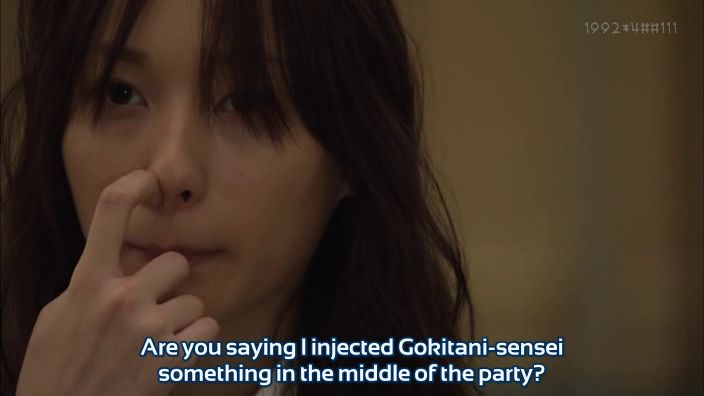





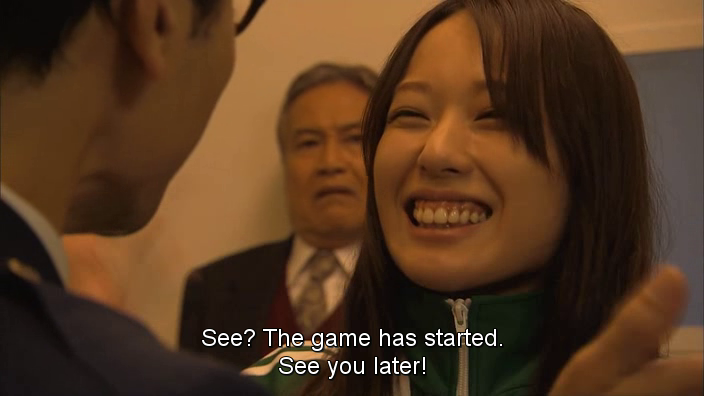














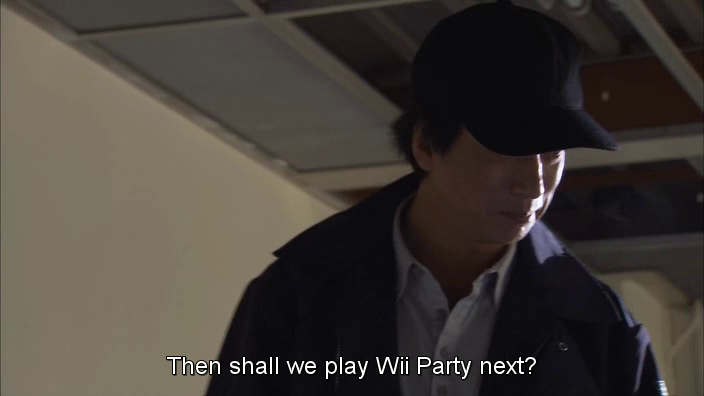


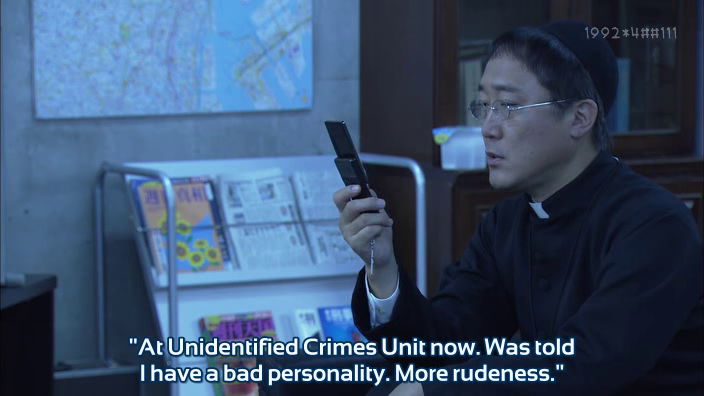

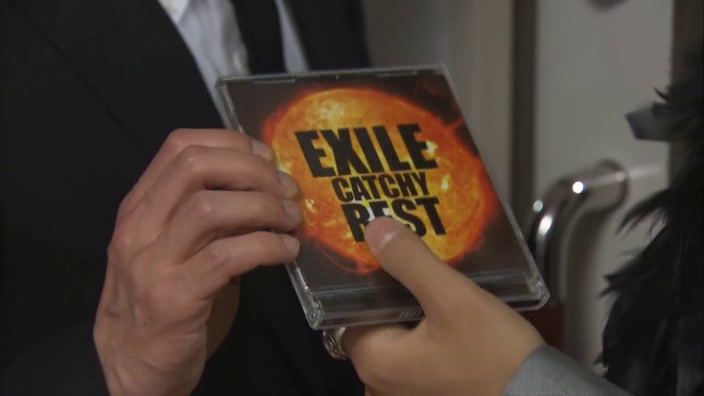





 It is one of the great tragedies of my life that I cannot include this TOTALLY LEGIT steam-powered wheelchair from 1811 in my novels, because it will look steampunk. Even though it is a real thing — or at least was proposed as a real thing and published in Ackerman’s, it is so out of keeping with what people imagine the Regency era to be like, that there’s no way to include it without it appearing to be an invention of mine.
It is one of the great tragedies of my life that I cannot include this TOTALLY LEGIT steam-powered wheelchair from 1811 in my novels, because it will look steampunk. Even though it is a real thing — or at least was proposed as a real thing and published in Ackerman’s, it is so out of keeping with what people imagine the Regency era to be like, that there’s no way to include it without it appearing to be an invention of mine.






